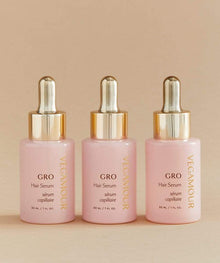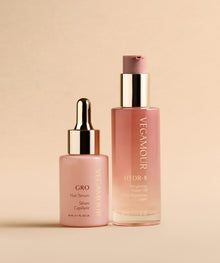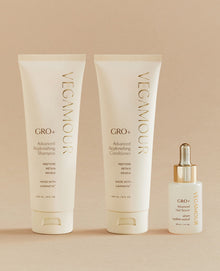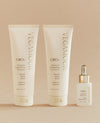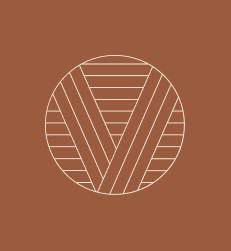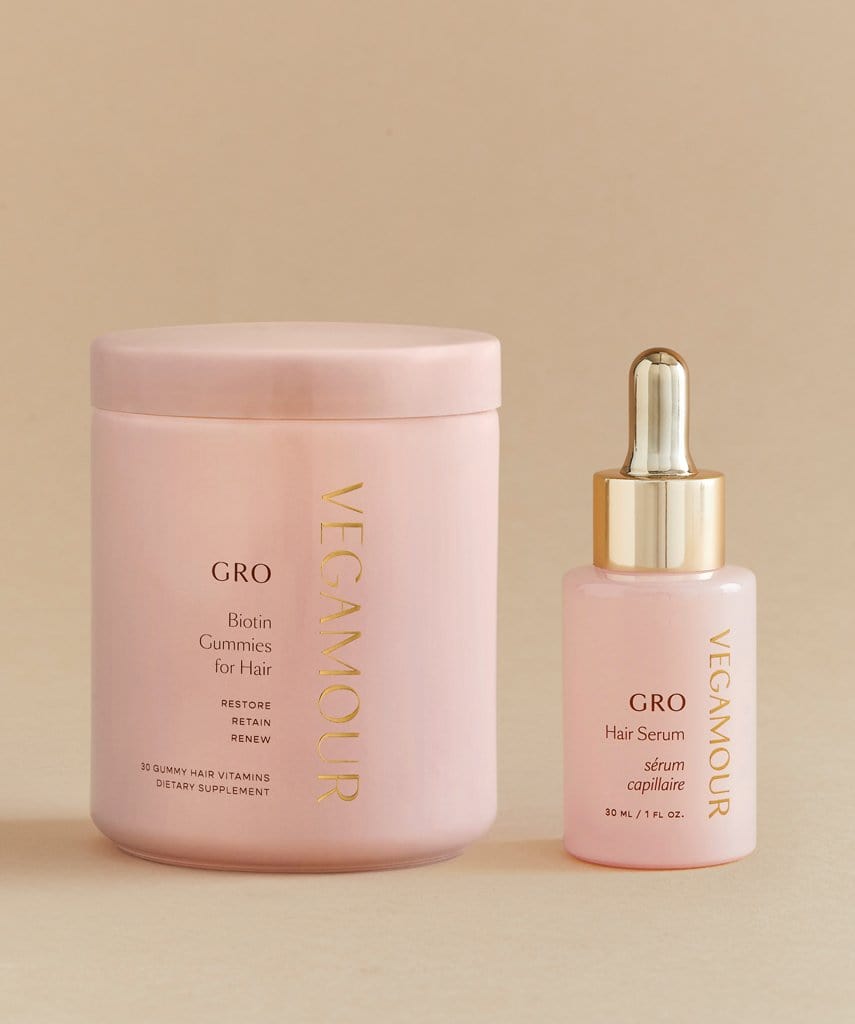The Ultimate Guide to Hair Growth Cycles
Fun fact: your mane doesn’t simply get longer all at once—it grows in stages, also called phases or cycles, in which the hair grows, rests, sheds and begins again.
For people who experience thinning hair or hair loss, keeping the hair in the growth phase for as long as possible is going to help you have healthier, longer and thicker strands of hair. But how can you support your hair’s natural growth cycle?
By better understanding the hair growth cycles, you can take the best care of your hair to support hair wellness. This ultimate guide to hair growth cycles will give you the insight you need into your hair’s growth and how exactly it affects your hair wellness.
How Exactly Does Hair Grow?
First, let’s talk about your hair’s structure.
Hair is made of keratin, a protein that’s more resilient than other types of proteins in your body. Each hair stems from a hair follicle, which is a structure in your skin that essentially anchors the hair to the top layers of your skin.
Sebaceous glands (which produce your body’s natural oil, sebum) open up into the hair follicle, helping to nourish and support the hair. Hair follicles develop in the womb, and humans don’t grow new hair follicles after birth (but will continue to grow new hair).
Your body—more specifically, your blood—nourishes the hair shaft. Combine these nutrients with sebum, hormones and any topical nutrients and your hair grows to be a lush, gorgeous mane. Right?
Not always. Unfortunately, this doesn’t happen consistently nor predictably. It sounds simple: the hair follicle and the hair shaft are what make up each hair. But hair growth isn’t so straightforward. There are four stages of hair growth, and any of your hairs could be in a different growth cycle on a certain day.
Let’s take a closer look at each cycle to better understand how hair grows and how you can help support it.
Related: How Fast Does Hair Grow?
The Anagen Phase
Anagen is your hair’s growth phase, and about 90% of your hairs are in this phase at any given time. So that’s the good news!
The bad news is that the amount of hairs in the anagen phase will continue to decline with age. Research isn’t yet able to establish a definitive cause for this, but what we do know is that hair loss can be complex, with stress, hormones, environmental factors, nutrition, certain health conditions and age all factoring into the equation.
During the anagen phase, new hair pushes the old hair up and out of the hair follicle, and this new hair will continue to grow anywhere from two to six years.
Did you know? Hair in the anagen phase will grow about six inches a year, depending on your hair type. Having a shorter anagen phase can stunt hair growth, leading to shorter, less full hair.
Find Out: How and Where to Donate Hair
The Catagen Phase
The Catagen phase is when your hair stops growing. This stage is completely natural and acts as a transition from the growth phase to the shedding process. About 1% of your hairs are in this stage at any time.
In people with thinning hair, a disproportionate amount of their hair is likely in the Catagen phase, preventing it from growing any more.
Catagen can last anywhere from 10 days to four months, and the hair essentially becomes what’s called a “club hair”. What this means is that the hair isn’t actively growing anymore and isn’t getting any nutrients, yet cellular activity within the hair shaft keeps the hair in the follicle without letting it fall out.
Did you know? Club hairs are typically the longest hairs on your head, as they’ve completed the growth phase, and will eventually fall out once the resting phase is complete and it’s time for your body to shed the hair.
Ready to GRO: Try the Good to GRO Kit
The Telogen Phase
Also known as the resting phase, about 9% of your hairs are in the Telogen phase at any time. During Telogen, hairs aren’t just resting—your body is actually getting ready to shed the hair and begin a new growth phase.
The hairs in the Telogen phase are club hairs and will remain on the head for about three months before entering the final stage of shedding.
Did you know? The Telogen phase isn’t the same thing as Telogen Effluvium, which is a condition in which a traumatic event or bodily shock forces hair into the Telogen phase prematurely, which can lead to much more hair loss than normal.
Also: Does Rosemary Oil Help Hair Grow?
The Exogen Phase
The Exogen phase is when your body finally sheds the club hair—it’s normal to lose about 100 hairs per day. This may sound like a lot, until you consider that you have between 80,000 and 120,000 hair follicles on your head!
The club hair is essentially shed as the new hair begins to push it out, so the anagen and exogen phase overlap each other.
Did you know? The Exogen phase only lasts a few days, making it the shortest of all the hair growth cycles.
Learn: What Medications Can Cause Hair Loss?
How Can You Support Hair Cycle Health (and Keep Hair in the Anagen Phase for Longer)?
Hair cycles are natural, so don’t be afraid to read about your hair entering a resting state and eventually shedding—hair needs to shed in order to generate new growth.
If you’re experiencing hair loss or would just love to see some more vigorous growth for your hair, you’re likely wondering how you can keep hair in the anagen phase for longer after learning about the hair growth cycles. So let’s talk about how you can do that.
As so many factors influence natural hair growth, there’s not just one singular thing that’ll support your hair wellness. Holistic care is essential to having healthy, normal hair growth cycles and keeping hair in the anagen phase for as long as possible.
To support a healthy and long anagen phase, you can:
- Reduce stress. Stress can not only promote chronic inflammation, but lead to hair loss—research shows women who experience high stress are 11 times more likely to experience hair loss.
- Eat healthy. Eating a well-balanced diet can give your body all the nutrients it needs for gorgeous hair. Too much added sugar can support chronic inflammation, which can negatively impact hair growth, so focus on whole foods to nourish your locks!
- Take it easy on your hair. Some hairstyles that put a lot of pressure on the hair can damage the hair follicle and lead to hair loss in a condition called alopecia areata.
- Consider a supplement. Vitamins or topical supplements can help nourish hair and keep hair growing for as long as possible.
These all include things that will support not just your hair health, but your general health and wellbeing. Have you had any success with changing your lifestyle or diet for hair growth? By supporting hair wellness, you can have your best chance for longer, stronger hair!
More From VEGAMOUR
- How to Donate Your Hair
- Do Collagen Supplements Help Hair Grow Faster?
- What Is Hair Made Of?
- Do Eyelashes Grow Back?
- Shop Influencer Whitney Sicher's Top VEGAMOUR Picks

